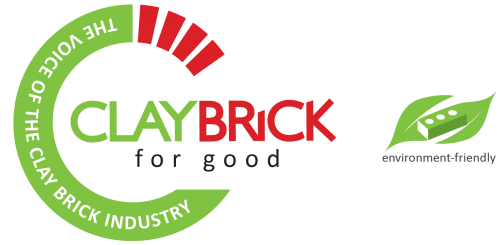Our sustainability journey – Algoa Brick
Before the concept of sustainability took on its current depth of meaning, Algoa Brick was already working towards reducing its resource consumption.
MD and SAEEC Board Member Nico Mienie, describes the company’s 15-year sustainability journey. It demonstrates his personal commitment to improve energy efficiency and sustainability in his business, and in the sector as a whole.
Nico is also Technical Director of the Clay Brick Association of Southern Africa, which has driven sustainability in the industry for the past 8 years.
Energy Efficiency
Algoa Brick has supplied top quality clay bricks to the Nelson Mandela Bay and Eastern Cape region for over 60 years.
“In 2005, Algoa Brick undertook a refit of a tunnel kiln,” explains Nico.
“One of the biggest jobs was to replace an outdated and unserviceable heavy furnace oil firing system with a newer oil firing system.
“Our kiln operated in this state until 2016 when Algoa Brick chose to replace a section of the oil firing system with higher efficiency oil burners supplied by Bernini Impianti.
“With the support of the EECB, Algoa applied for a SARS 12L tax incentive due to the improved energy efficiency of the new burners. We were proud to be the first brick manufacturer in South Africa to be approved for this.
“Not long after the Bernini oil burner installation, unpredictable oil prices forced Algoa Brick to reconsider its energy options. In 2018, the remaining 2005-vintage oil firing system was replaced with a coal firing system also supplied by Bernini.
“This coal firing system is designed to allow co-firing with a percentage of biomass. This enabled us to shift quickly and easily towards more sustainable firing practices. The new system worked well from inception and it wasn’t long before we were able to achieve a stable firing fuel breakdown of around 65% coal, 30% oil and 5% biomass.
Switching to biomass fuel
“At Algoa Brick, the biomass used is basically sawdust produced from the processing of waste wood – much of which would have ended up in landfill.
“The operation of obtaining waste wood and processing it into a useful format took a while to get up to speed but once the teething issues were resolved, it became apparent that there was scope to push the sustainability envelope.
“Due to their experience with our firing system, Bernini were again approached to supply a biomass burning system capable of firing a full zone of the tunnel kiln. In combination with locally fabricated equipment, the new installation was commissioned in November 2020. Algoa Brick is now achieving a firing fuel breakdown of approximately 60% coal, 20% oil and 20% biomass.
“Running the tunnel kiln at an output of up to 280t/day of fired ware, Algoa Brick is currently sourcing 20% of its firing energy demand from renewables and is expects to increase to 30% in the near future. Tomorrow’s legacy
“Algoa Brick takes pride in its water saving and leadership of sustainable firing in the South African clay brick industry. However the greater satisfaction lies in the legacy the company leave for its descendants.
Reducing process water usage
Algoa Brick’s factory site does not have a water-borne sewerage service so all sewage must be trucked away. More then 95% of the company’s water “waste’ is actually grey water. Although the cost of municipal water was relatively insignificant, the recycling of grey water for use in brick production provided Algoa Brick with significant sewerage cost savings despite the investment in the holding tanks and transfer pumps.
With the grey water investment bearing fruit, the onset of water scarcity in the Nelson Mandela Metro area provided a significant driver to step up water saving measures. To reduce Algoa Brick’s risk of a water crisis, they embarked on a multi-faceted water management programme using:
- rain water harvesting
- grey water recycling
- process water holding tanks with a transfer pump system
Rain water harvesting and grey water recycling are sufficient under normal conditions. The 60,000l capacity process water holding tanks are filled by a waste services company as and
when suitable waste water streams are available. These waste streams include inorganic contamination in water such as traces of oil or solvents or the presence of organic waste such as waste fruit juice or tank washings.
Key Sustainability Indicators: Emissions & Resource Use
2019 Audited Report
- Total GHG emissions: 0.25 tCO2e per tonne of brick produced - 9.5 % below sector average.
- GHG emissions per tonne of saleable brick: 0.004 tCO2e - 20.57 % below sector average.
- Energy consumed: 2.86 gigajoule (GJ) per tonne of saleable bricks - 6.1 % below sector average.
- Total water consumption: 115.9 l of water per tonne of brick - 45.8 % below sector average.
- Alternative water: non-mains sources: 37.9% of water consumed from alternative sources - 41.4 % below sector average.





